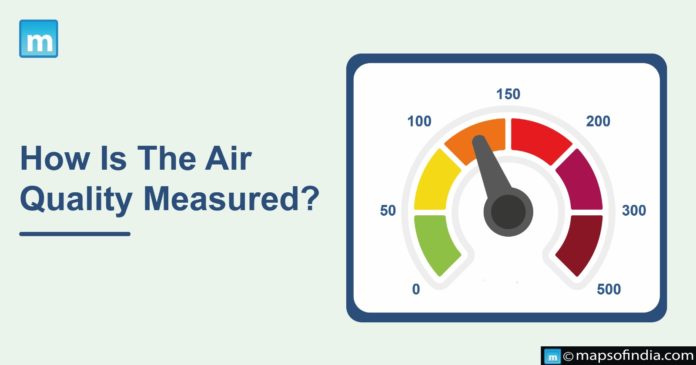Since emissions are rising, air quality worsens, endangering human health and accelerating climate change, biodiversity loss, pollution, and waste.
Why is air quality measured?
The World Health Organization estimates that 7 million people die prematurely each year due to air pollution inhaled by 99%. The most significant health risk is posed by PM2.5, which is defined as particulate matter with a diameter of 2.5 micrometres or less. Legal air quality standards frequently use PM2.5 as a metric. PM2.5 is a substance that, when inhaled, is thoroughly absorbed into the bloodstream and has been connected to diseases like cancer, heart disease, lung disease, and stroke.
In 37% of countries, air quality monitoring is not required by law, according to a 2021 report from the United Nations Environment Programme (UNEP). In many other countries, monitoring quality is a concern for experts.
Air Quality Index
The Air Quality Index (AQI) reports daily air quality. It informs you of potential health risks and your air’s cleanliness and pollution levels. The AQI focuses on possible health consequences that could happen hours or days after breathing polluted air.
EPA calculates the AQI for the five primary air pollutants covered by the Clean Air Act: nitrogen dioxide, carbon monoxide, sulfur dioxide, and particle pollution. The EPA has established national air quality standards for each pollutant to safeguard the public’s health. Ground-level ozone and airborne particles are the two most dangerous pollutants to human health.
How is air quality calculated?
Air quality databanks combine satellite data, government-owned air quality monitors, and citizen-sourced data to generate an AQI reading. Depending on their dependability and the type of pollution being measured, these databases may give different weights to the data. There are six categories in the AQI. The level of health concern for each category varies. Each category has a unique colour as well. People can quickly ascertain from the color whether the air quality in their neighbourhoods has reached unhealthy levels.
In 2021, UNEP created the first real-time air pollution exposure calculator with IQAir. Almost every country’s population’s hourly exposure to air pollution is determined by the database, which uses artificial intelligence and PM2.5 readings to prioritize.
Multiple factors contribute to air pollution, including natural and human-caused sources, such as dust storms and smoke from wildfires and volcanoes, and using fossil fuels in cooking and transportation. Sensors for identifying particular pollutants are included in air quality monitors. Others rely on satellite imagery to measure the energy reflected or emitted by the Earth. At the same time, some use lasers to scan the density of particulate matter in a cubic meter of air.
Air Quality is a Necessity
An indicator of how clean or polluted the air is is its quality. Because polluted air can harm our health and the environment, it is crucial to monitor air quality.




